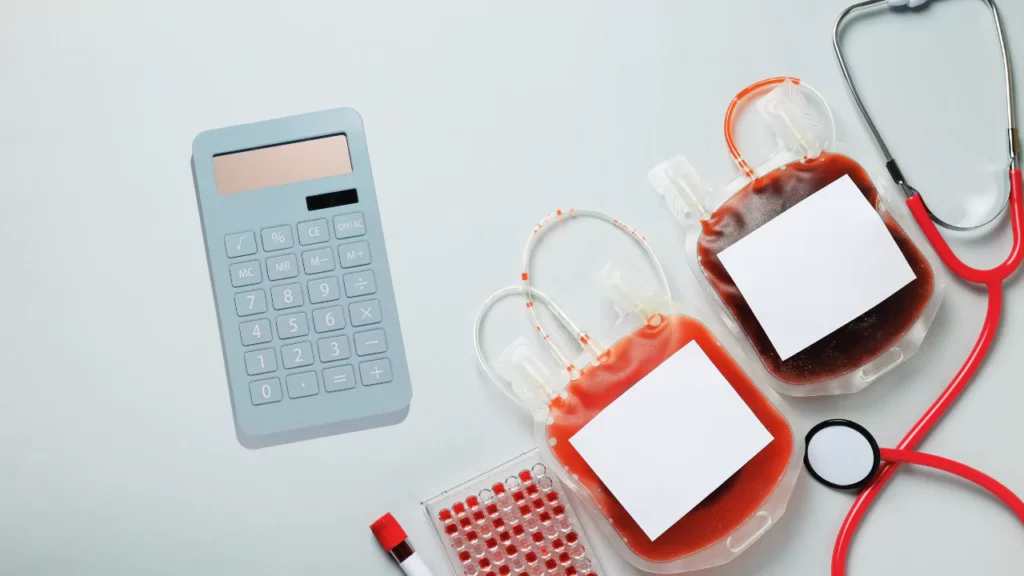A simple tool to convert a measured OD260 value to the corresponding DNA or RNA concentration in µg/mL.
OD260 to Nucleic Acid Concentration Calculator
Enter the measured OD260 to calculate the concentration of dsDNA, ssDNA, and ssRNA.
Important note
This tool is for estimation purposes only and assumes ideal conditions. Actual concentrations may vary based on the specific characteristics of the nucleic acids and other experimental conditions.
The Conversion Calculator for Nucleic Acids is an essential tool for scientists and researchers working with DNA and RNA. This calculator simplifies the process of converting an optical density (OD) reading at 260 nm (OD260) to the concentration of nucleic acids (DNA or RNA) in a solution. Understanding how to convert OD260 values to concentration is critical for accurately quantifying nucleic acids, which is a common requirement in various molecular biology experiments.
Principles
When nucleic acids absorb ultraviolet light at 260 nm, this absorption can be measured as an optical density (OD) value. The OD260 value is directly proportional to the concentration of nucleic acids in the solution. Different types of nucleic acids (dsDNA, ssDNA, and ssRNA) have specific conversion factors that relate OD260 to concentration.
The key principle behind this conversion is based on the Beer-Lambert Law, which states that absorbance (A) is proportional to the concentration (C) of the absorbing species in the solution:
A=ϵ×C×l
Where:
- A is the absorbance at 260 nm.
- ϵ is the molar extinction coefficient.
- C is the concentration of nucleic acids.
- l is the path length of the cuvette (usually 1 cm).
Uses
- Quantifying Nucleic Acids: This calculator is used to convert OD260 readings to concentrations for various nucleic acids, such as dsDNA, ssDNA, and ssRNA.
- Standardizing Experiments: Accurate quantification ensures that experiments are reproducible and consistent across different runs and different labs.
- Preparing Solutions: Knowing the concentration of your nucleic acid solutions helps in preparing them accurately for downstream applications like PCR, qPCR, cloning, and sequencing.
How to Use the Calculator
- Enter the OD260 Value: Input the measured OD260 value into the calculator.
- Calculate: Click the ‘Calculate’ button to convert the OD260 value to concentrations for dsDNA, ssDNA, and ssRNA.
- View Results: The calculator will display the concentrations in µg/mL for each type of nucleic acid.
Equations Used
The conversion factors used in this calculator are as follows:
- dsDNA: Concentration (µg/mL)=OD260×50
- ssDNA: Concentration (µg/mL)=OD260×33
- ssRNA: Concentration (µg/mL)=OD260×40
Where:
- 50 is the conversion factor for dsDNA.
- 33 is the conversion factor for ssDNA.
- 40 is the conversion factor for ssRNA.
Example Calculation
Suppose you have measured an OD260 value of 0.5 for your nucleic acid solution. You can calculate the concentrations for dsDNA, ssDNA, and ssRNA as follows:
Input OD260 Value: 0.5
Using the conversion factors:
- dsDNA Concentration:Concentration=OD260×50=0.5×50=25 µg/mL
- ssDNA Concentration:Concentration=OD260×33=0.5×33=16.5 µg/mL
- ssRNA Concentration:Concentration=OD260×40=0.5×40=20 µg/mL
Therefore, an OD260 value of 0.5 corresponds to:
- 25 µg/mL of dsDNA
- 16.5 µg/mL of ssDNA
- 20 µg/mL of ssRNA
Important Notes
The Conversion Calculator for Nucleic Acids (OD260 to concentration) is a straightforward and essential tool for accurately quantifying nucleic acids in your laboratory. By understanding the principles and equations behind the conversion, researchers can ensure precise measurements that are critical for successful molecular biology experiments. Use this calculator to streamline your workflow, maintain consistency, and enhance the accuracy of your nucleic acid quantification.
This calculator provides an estimation based on ideal conditions and does not account for potential losses during pipetting or other experimental procedures. The actual concentration may vary based on the specific characteristics of the nucleic acids and other factors such as contaminants, sequence composition, and solution conditions. Always consider practical laboratory conditions and use this tool as a guideline rather than an absolute measure.

Dr. Sumeet is a seasoned geneticist turned wellness educator and successful financial blogger. GenesWellness.com, leverages his rich academic background and passion for sharing knowledge online to demystify the role of genetics in wellness. His work is globally published and he is quoted on top health platforms like Medical News Today, Healthline, MDLinx, Verywell Mind, NCOA, and more. Using his unique mix of genetics expertise and digital fluency, Dr. Sumeet inspires readers toward healthier, more informed lifestyles.




